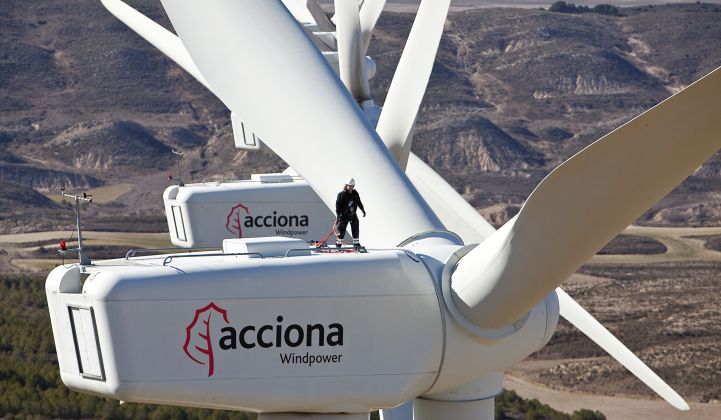Wind is set to become the European Union’s largest source of electricity within a decade, according to International Energy Agency Executive Director Fatih Birol.
“With the initiatives coming from Brussels and the hard work of the industry, we expect wind will be the largest source [in] less than 10 years, just after 2025, in Europe,” he said.
The estimate, unveiled in Hamburg, Germany, at European wind industry association WindEurope’s Global Wind Summit, was a marked change from the IEA’s last projection.
In its 2017 World Energy Outlook, the agency predicted wind would overtake other European energy sources “soon after 2030."
In a press note, WindEurope later clarified that the IEA’s new estimate for wind dominance was 2027. The more optimistic outlook is based on a recently agreed EU target of 32 percent renewable energy by 2030.
According to the IEA, wind electricity generation in the region will more than triple, to 1.1 petawatt-hours, by 2040. This is equivalent to the entire electricity supply of Japan today, Birol pointed out.
By 2040, the IEA estimates wind will account for around 31 percent of total electricity generation in Europe, while nuclear and gas will account for a further 17 percent each. Other renewables, mostly bioenergy, will supply around 23 percent.
Finally, solar will cover about 8 percent of Europe’s electricity needs, and coal will meet the remaining 4 percent or so of demand.
The bulk of Europe’s upcoming wind capacity will be offshore, the IEA believes, with the EU accounting for most of an estimated 200 gigawatts that will have come online worldwide by 2040.
It is unclear if the IEA considers the U.K., a major offshore player, to still be part of the EU by then. The surge in offshore installations will be driven by offshore’s ability to tap into stronger, more consistent winds with increasingly large turbines, said Birol.
“Our hope is developments in Europe can spark a wave of offshore wind appetite out of Europe,” he said, citing China, India and North and Latin America as potential growth markets. “Offshore wind opens a door for a new push for hydrogen,” he added.
Hydrogen production could be an agenda item when Japan hosts its first-ever G20 Summit in June next year, he said. Meanwhile, policymakers around the world are expected to become increasingly concerned with integrating intermittent renewables onto the grid.
Already in 2016, Ireland and Denmark were dealing with wind-plus-PV penetrations of more than 20 percent. This put the countries in "Phase 4" of system integration, according to IEA — a phase requiring advanced technologies to ensure grid reliability.
Germany, Italy, the U.K. and the EU itself were all in Phase 3, with wind and solar covering more than 10 percent of demand and electricity networks needing investments in power plant, storage, grid and demand-side flexibility.
In contrast, according to the IEA, the U.S., Australia, Brazil, China and India were still in Phase 2, drawing on existing thermal, hydro and grid flexibility to integrate single-digit percentages of wind and solar.
In Phase 1 countries, such as Russia or South Korea, where wind and solar penetration is in the low single digits, system integration is still not an issue, according to the IEA.
Grid integration is expected to become a more widespread concern in the runup to 2040, though, as global economies bet heavily on electrification.
By 2040, China and India alone are expected to add as much electricity generating capacity as the U.S. and EU combined today.
“India, in 20 years, is adding one entire Europe” to global electricity demand, said Birol. “China is adding one United States. Therefore, decisions that will be taken in Beijing or New Delhi will be critical in terms of which power sectors, which technologies, we see.”
Drilling down, the IEA believes much of this rising electricity demand will come from a single appliance: the air conditioning unit. What will supply that demand is still unclear, but “we think onshore and offshore wind have huge potential,” Birol said.
“We are just at the beginning of the story.”




